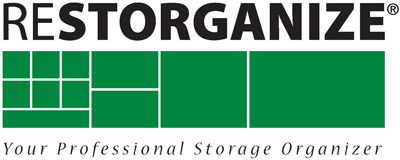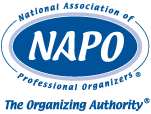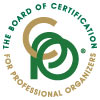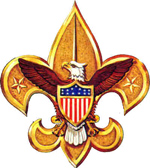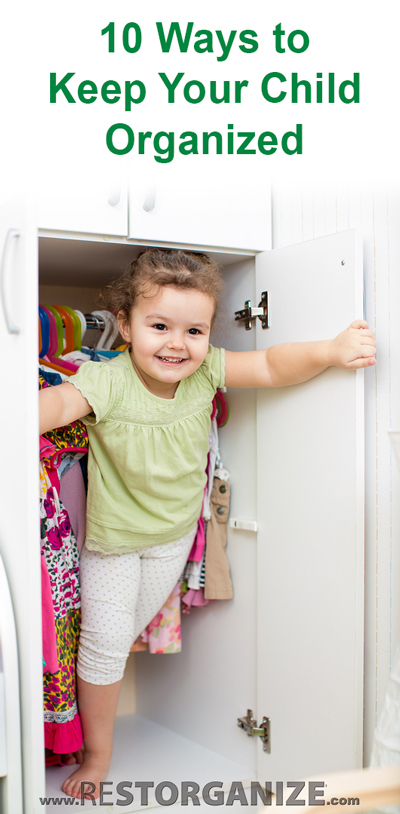 Does your child need a little help staying organized? A lot of help? Here are 10 ways to keep your child organized, plus a bonus!
Does your child need a little help staying organized? A lot of help? Here are 10 ways to keep your child organized, plus a bonus!
1. Assign a shelf as a “home locker” for things to travel to school.
Designate a “locker” or “stuff station” for each child near the door to use when leaving or coming home. Technically, this doesn’t have to be a shelf, any designated area will work. But a shelf or small cabinet by the door seems to work best for most people. Keep things here that are school related: backpack, lunch box, notes to/from teachers, permission slips, gym clothes.
2. Model, encourage and praise good organizational skills.
Organizing does not come naturally to most people, and children especially can have a hard time with it. But if they see you trying to be organized, they’ll be more likely to be organized. Remember to notice and give praise to the successes your children make when they’re learning how to be organized. And praise yourself for good organization too!
3. Organize time as well as space – keep a master calendar.
I know our parents thought we had a lot going on when we were children, but today’s kids have even more stuff. And keeping a calendar of who’s doing what and when will make everybody’s lives a little easier.
There are so many types of calendars today that it can be overwhelming which one to use. You should all be able to access and edit the family calendar. An electronic calendar works great if everyone’s comfortable with it and can log in on their personal devices. If you use a paper calendar, locate it somewhere in the house where everybody can see it and reach it easily.
Regardless of which type of calendar you choose, assign each person a different color for their events. Electronic calendars have this feature. And for paper calendars, use colored pencils, pens or markers.
4. Store things in see- through plastic boxes.
Boxes are great for storing and keeping things. They’re also great for harboring things that should be elsewhere.
If you use boxes to store your child’s things, make sure you use see-through boxes. This helps your child know where they can find something, or know where to put it back. If your child can’t read yet, see-through boxes are especially helpful.
5. Create routines for morning, evening, homework and staying organized.
A routine for your child will help them know when things need to happen. From when they wake up in the morning to when they go to bed.
It’s healthy for developing brains and bodies to have a consistent flow and routine. And a routine to keep time organized helps keeps areas organized and reduces anxiety – for kids and grownups.
Yes, it would be nice if our lives always ran on routine, and we know they don’t. So strict times for things are not as important as ORDER of things. Instead of “Dinner at 6:30,” try, “Come home, put your stuff in the stuff station, wash hands, do homework and then eat dinner.”
6. Regularly sort, purge and donate to keep clutter to a minimum.
Kids can make a mess, and it seems there’s an unending supply of stuff they can use to do it. Overwhelm is overwhelm, it doesn’t matter who you are. It’s helpful to go through items regularly to make decisions on what needs to stay and what your child has grown out of.
Does your child still play with the Lincoln Logs? Do all the costumes still fit? Has the baby outgrown the “learning to walk” toys that he used to push around the house?
Once a month, pick a child and go through their stuff together. Encourage them to let things go. When you donate unused items, your child can help someone else who may not be able to afford those things. And for you, well, tax write offs are nice!
7. Involve your child in organizational decisions and processes.
Let your child have input into what stays and what goes. Even involve them in purging your own things. Letting them help make decisions empowers them. The more they see and participate in organizing, the more likely they’ll learn it.
8. Organize from your child’s point of view – lower is easier to reach, higher is harder.
Before 1907, children had been learning on adult sized tables and chairs, using adult sized scissors and putting their things on adult sized shelves. Maria Montessori pioneered the “kid sized” classroom, which all schools use today.
We can learn from this: it’s much easier for children to find and use things that are down on their level. Clothes in the closet should be low so your child can reach them. This helps them pick out clothes for the next day and hang clothes back up.
Clothes in dressers should be in lower drawers. Blankets, out-of-season clothes and one-off items can be in upper drawers. If your child can access quickly what they want and need, they can be independent and learn to clean up after themselves.
9. Label everything – even use pictures and simple words for early readers.
Label makers are everywhere, and they’re pretty inexpensive and easy to use. Labeling where things live gives them a home. If your child can’t read, draw or print a picture off the internet. Tape it to the container next to the written words. This helps them learn where items belong AND supports reading.
10. Get ready for tomorrow, tonight.
Cut your morning work in half: in the evening, help your child get ready for the next day. Have them use the stuff station to collect books, paperwork and show-and-tell items. Check the weather and choose appropriate clothes and outerwear.
You might still have to rush if your child overslept, but they’ll have things ready to go for a shortened morning routine!
11. Bonus: Lists
Any time you have more than three things to remember, you risk forgetting something. And kids are even worse about this. Lists can be a big help.
Some people make daily print-outs of what they need. Some people number the items or use acronyms. If a list will help your child, help them find a method to create and keep a list.
Acronym: PLuBB
Numbers or list:
- Paperwork
- Lunchbox
- Backpack
- Books
I hope you find these 10 (ahem, 11) ways to keep your child organized helpful. Are any of them particularly useful? Do you have anything to add?
Please share your thoughts in the comments.
And share this information with your friends on Facebook, Twitter and Pinterest!
